Question
Can I use ConstructConnect Takeoff for sitework (Cut and Fill)?
Answer
Yes!
You can use ConstructConnect Takeoff to determine quantities of earth when prepping a site. It takes a little effort to setup and you will use Excel for the final calculations (combining several Takeoff Items' Results).
To create an estimate of your cut & fill, you first need to find your "base" elevation - the finished elevation on the site plan to which you are cutting and filling. In our example below, the building sits at 76' - we consider that our "base" elevation.
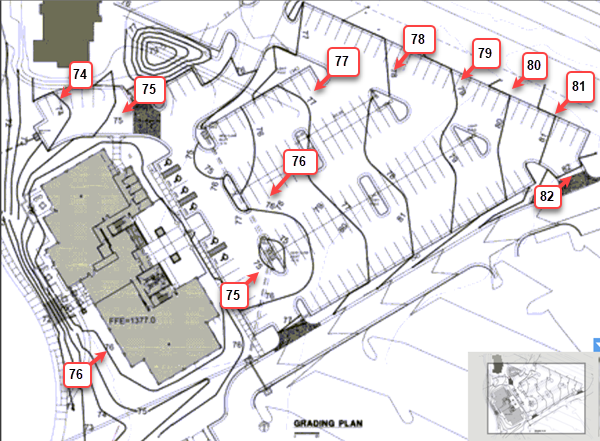
Next, we need to create a few Takeoff Items; we need to create a Takeoff Item for each change in elevation from our base (76'). In our example above, we've emphasized contour lines at 74', 75', 77', 78', 79', 80', and 81'. There are some others, but we are going to ignore those for now and concentrate on just 74' - 81'.
All Takeoff Items will be Areas.
There are going to be "Cut" Takeoff Items that will result in negative takeoff Results and "Fill" Takeoff Items that will result in positive takeoff Results. Once we have the cumulative Results for all those Takeoff Items, we'll use your favorite spreadsheet program to combine those Results, and you will have a total amount of earth you'll need to remove or add.
Our example below is a very simplified process assuming you simply want to level an plot of land to a specific elevation.
You may need to modify the process below if you are creating contours by comparing an original/existing site/contour plan to the intended/final site plan. For detailed advice on how to perform complex takeoff, please contact our professional Training Team: Contacting Support to Help with the Product or Platform.
How To...
Fill Takeoff Items (adding material)
We'll start with the Takeoff Items that will generate positive results (adding earth to the site).
Our first Takeoff Item is going to be for the sections in the 75' elevation.
We set up this Area Takeoff Item with a Thickness of 1' (one foot) to account for the variance between it and the Base (76').
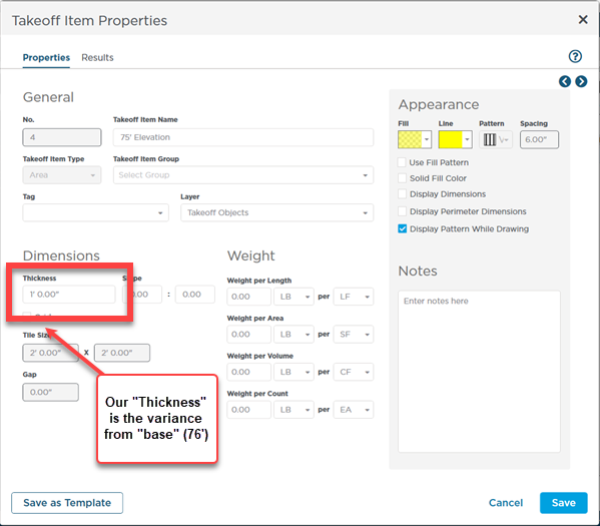
Takeoff Item Properties - note that we set the Thickness to one foot (76' - 75' = 1')
On the Results tab, uncheck "Area" and check "Volume" (unless you need to know the surface area of each elevation).
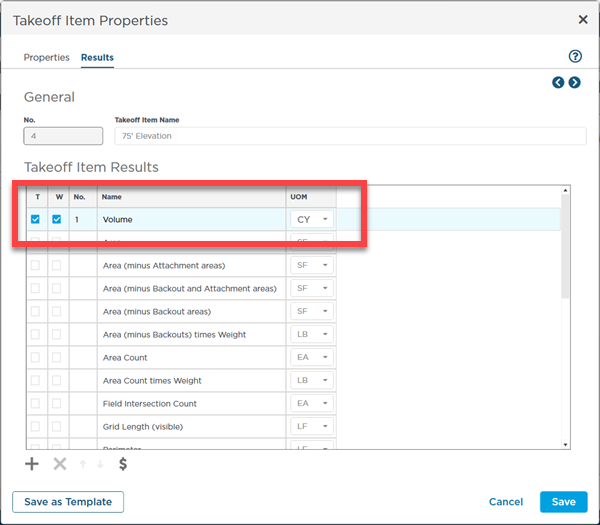
Takeoff Item Results - select CF or CY, whichever makes more sense to you
Next, we create a Takeoff Item for the 74' elevation, adjusting the Thickness according to its variance from the base (76' - 74' = 2').
Duplicate the 75'
Takeoff Item to make life easier for yourself, you only need to change the information on the Properties tab (in this case, just the Thickness needs to be changed).
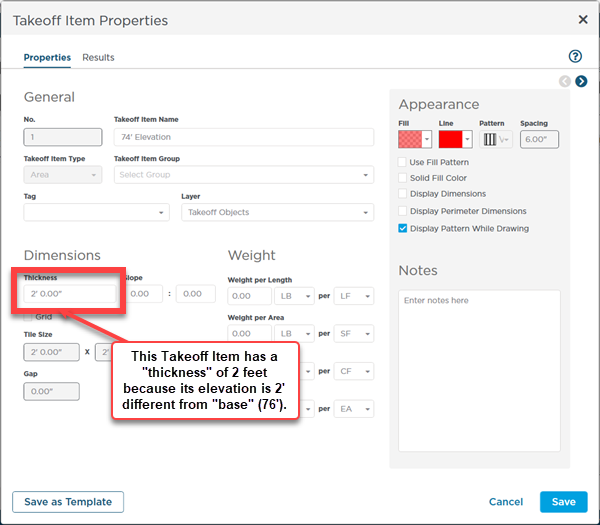
Takeoff Item Properties - note that we set the Thickness to two feet (76' - 74' = 2')
Continue this process to account for all elevations below your "base".
Cut Takeoff Items (removing material)
Accounting for cut/removing material requires an extra step, but once you've done it, that work can be used in all future bids. We need to set up a Custom Formula to calculate a negative Result.
Create the Takeoff Items
Our first Negative Result Takeoff Item is going to be for the sections in the 77' elevation.
We set up this Area Takeoff Item with a Thickness of 1' (one foot) to account for the variance between it and the Base (76').
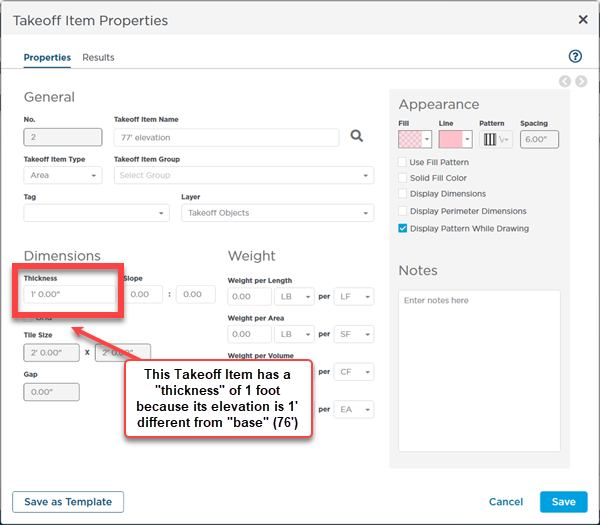
Takeoff Item Properties - note that we set the Thickness to one foot (76' - 77' = |1'| (it's actually negative 1, but you cannot enter a negative value for Thickness))
On the Results tab, uncheck "Area" (unless you need to know the surface area of each elevation) and click the plus button below the Results grid.
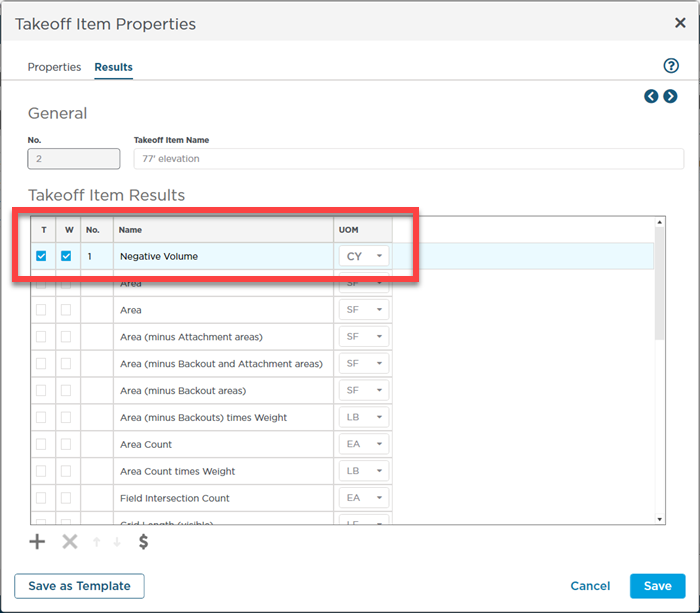
Takeoff Item Results - click the plus button to add a new, Custom Formula
The Area Formulas list opens.
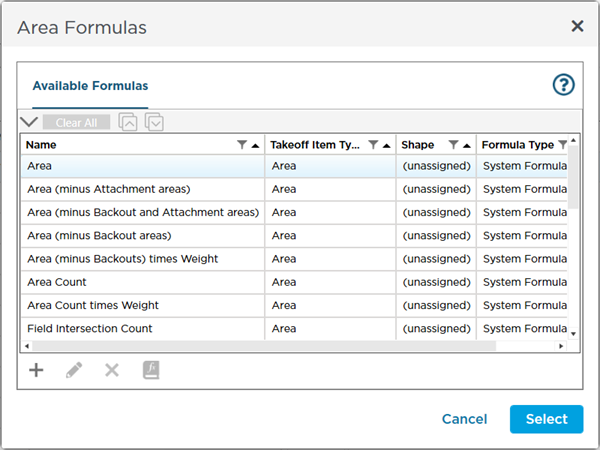
Create Custom Formula
We need to create a Custom Formula that will calculate a negative Result. Don't worry, this is pretty easy.
- In the Area Formulas list, click the plus sign below the Formulas grid to add a new, custom Formula.
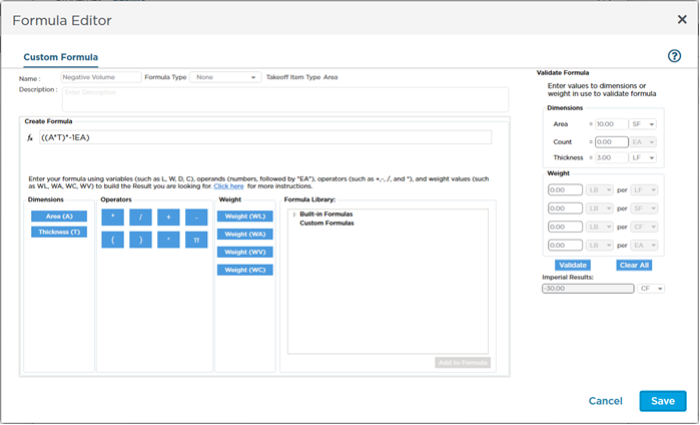
Formula Editor dialog box
In the Formula Editor,
- Name your Custom Formula (we used "Negative Volume", we are not very creative...)
- Set a Formula Type if you like, this allows you to organize the group/organize the Master Formulas list
- The Takeoff Item Type is set to "Area" automatically (because you opened this from an Area Takeoff Item)
- In the formula (fx) box, type ((A*T)*-1EA) (this multiplies the taken off Area by the Takeoff Item's Thickness and then multiples by negative 1)
- Validate your formula by entering in Area and Thickness values and clicking the "Validate" button
- Click Save
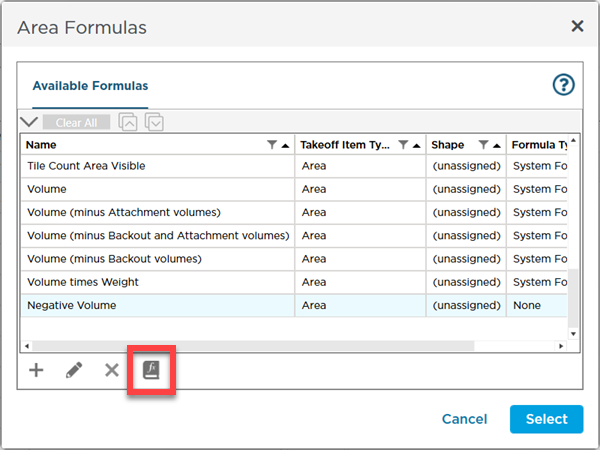
Your Custom Formal is shown at the bottom of the Area Formulas list.
To make this Custom Formula available in future bids, click the Add to Formula Library button

.
- With your new Custom Formula highlighted, click the Select button.

Takeoff Item Results with Negative Result selected
- Select the appropriate UOM.
- Click Save.
Next, duplicate this Takeoff Items for the 78', 79', 80', 81', and 82' elevations, adjusting the Thickness for each Takeoff Item, according to its variance from the base (76').
Taking Off Elevation Changes
Set and Verify your scale before drawing any
takeoff.
For our example, we have the following list of Takeoff Items:
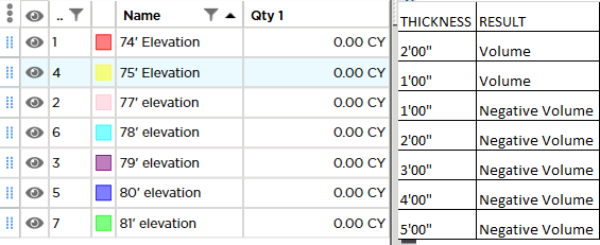
After setting and verifying Scale, draw takeoff using the Takeoff Items that correspond to the elevations on the contour map.
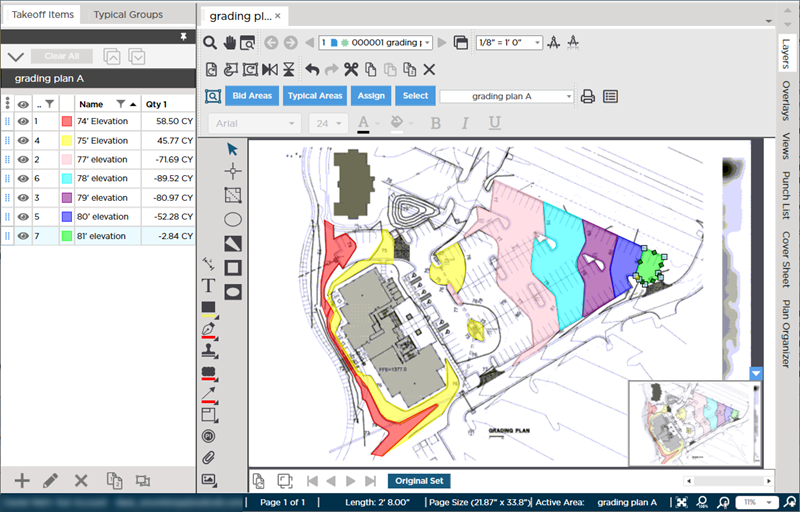
We'll call our example "done", although it's not perfect, it's good enough to show you the next step...
Click on the Worksheet Tab.
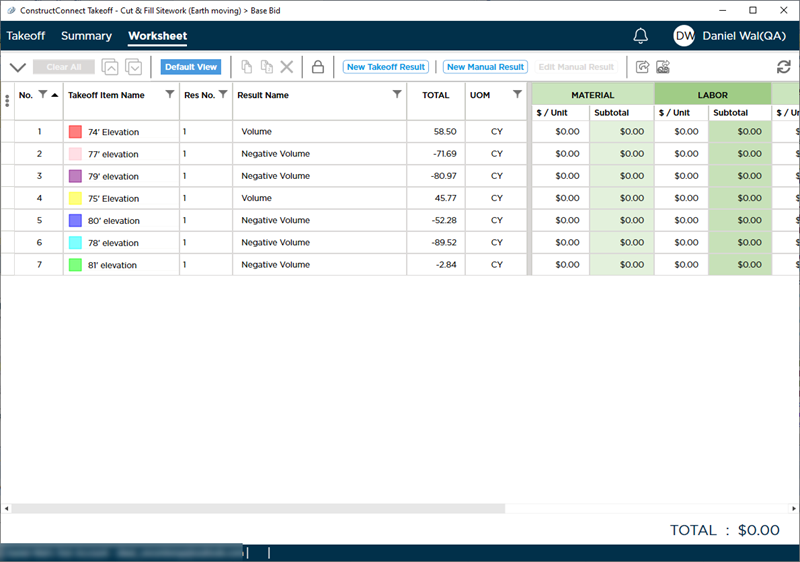
Now, it's time to export this information to Excel, click the Export to Excel button, toward the upper-right of the Worksheet Tab.

The Export to Excel dialog box opens...
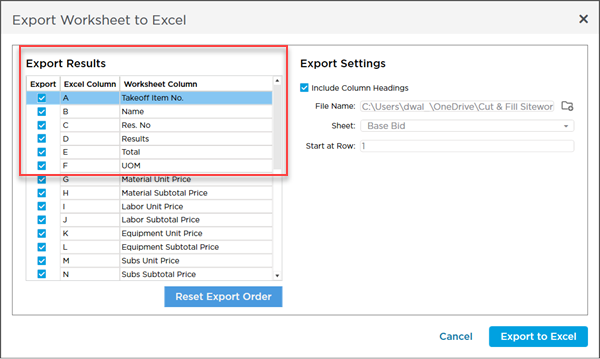
You can un-check all but Columns A - F (if you want).
Note the File Name - you can change the location if you like by clicking the folder button next to the textbox.
Click Export to Excel.
(Reminder: you must have a locally-installed version of Excel on your computer to use the export function.)
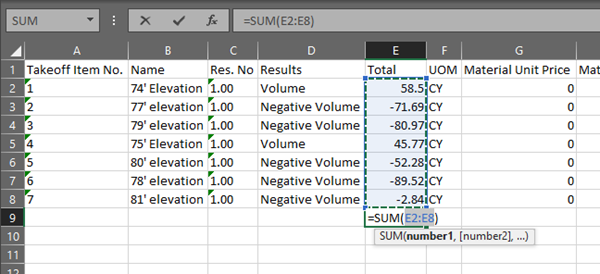
In Excel, use the AutoSum function to add together all the individual Takeoff Items' Results.
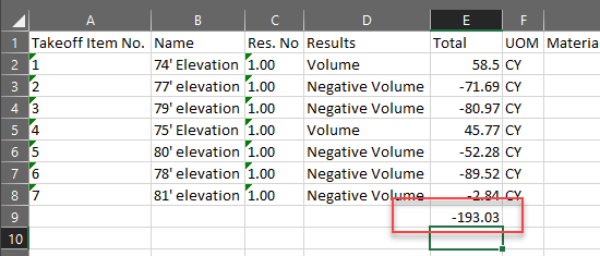
A negative total means you will be removing material, and a positive total means you need to add material.










 .
.





